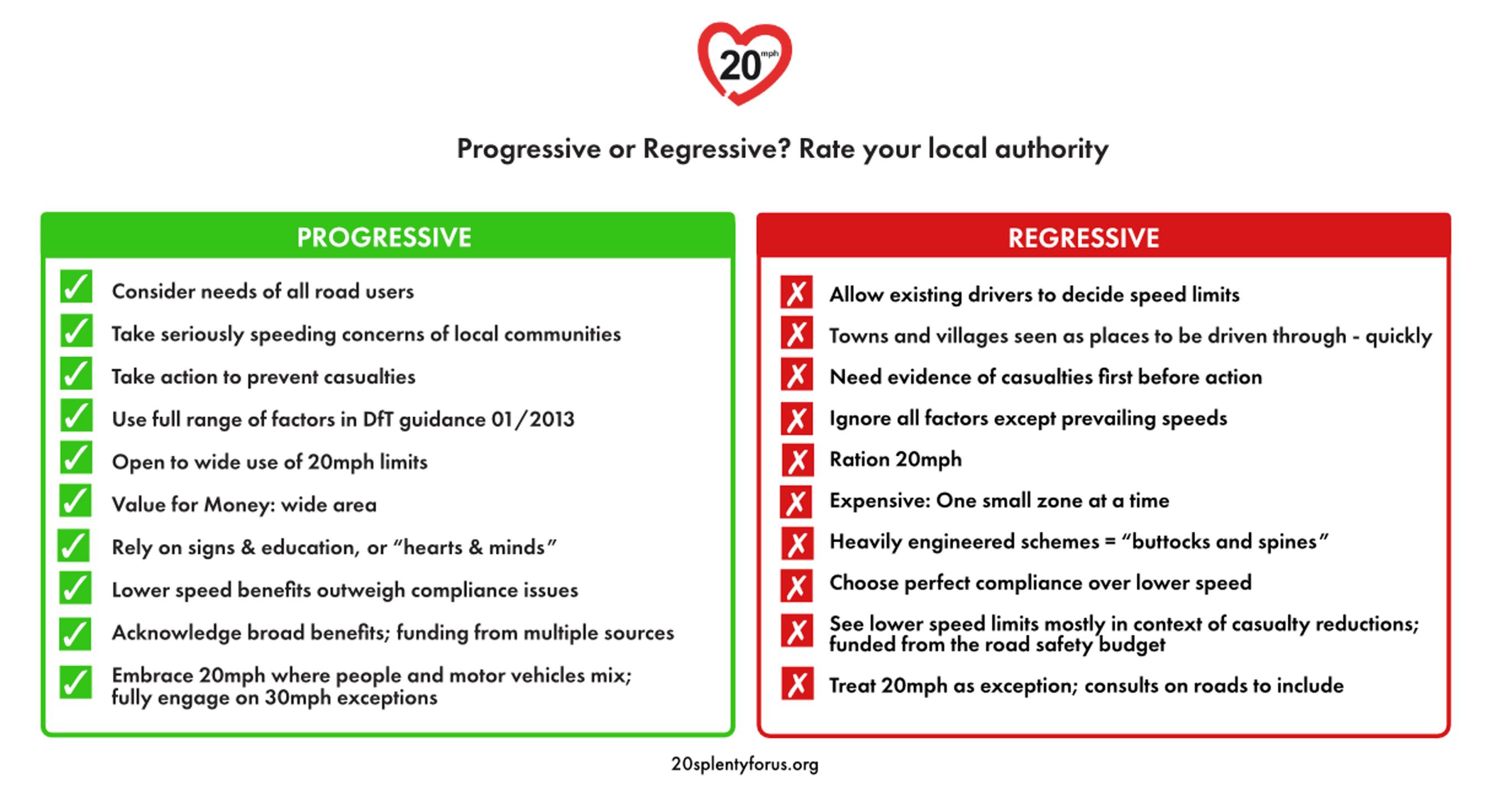

Transport Secretary Louise Haigh MP has said “20mph has her support”. Haigh pledged to deliver a road safety strategy and to increase active travel funding . Health and sustainability are clear priorities.
This is refreshing news for 20’s Plenty for Us as it underlines how the transport tectonic plates have been shifting for some time in favour of 20mph. A presumption of ‘20mph where people are’ offers multiple wins for public health, for reducing road danger and for increasing active travel. It is affordable ‘low-hanging fruit’.
Louise Haigh’s announcement shows that the DfT will support English local authorities that want to implement 20mph. Speed limit setting powers are devolved to locally elected councillors in highways authorities and elected mayors can fund 20mph.
With 63 out of 153 English Highway Authorities already committed to 20mph as normal, 20’s Plenty is offering a free two-hour webinar on 9 October 2024, where four authorities will explain and answer questions about how they are delivering 20mph.
Surrey’s Vision Zero policy, includes lower speed limits on rural lanes and 20mph in built up areas.
Oxfordshire is implementing 20mph where local Parishes and Town Councils request it.
Cornwall pledged 20mph where people want it. With over 135 parishes saying “yes please”, 20mph became county policy.
Cambridgeshire won funding from the Combined Authority Mayor to roll out 20mph across the county.
In 2020 the United Nations and World Health Organization agreed ‘the Stockholm Declaration’ of 30km/20mph as best practice where vulnerable road users mix with motor traffic.
Fast traffic severs communities and while infrastructure to protect those walking or cycling is welcome, it is also costly to implement and is the result of endorsing 30mph near vulnerable road users.
Progressive Highway Authorities presume 20mph for built up areas. Exceptions can be made for a higher speed limit: mainly those streets where there are unlikely to be vulnerable road users. In reality, a small percentage of streets in towns and cities are likely to remain at 30mph. The choice of speed limit will relate to the presence of people, not the current speeds on a street. Oxfordshire and Cornwall for instance are not deciding which roads will have 20mph speed limits based on current vehicle speeds. Research consistently shows local support for “targeted 30mph”, with 20mph limits as the presumption on streets where people and vehicles mix.
Jeremy Leach 20’s Plenty Director / London Coordinator and Action Vision Zero Founder said: “All effective Vision Zero and safe system strategies include the presumption of 20mph speed limits.”
Widespread 20mph limits are key to creating happier, healthier communities which are more child, family, elderly, tourist, shopper, and climate friendly. 20mph limits help reduce the costs of moving around the local area as more people feel safe to walk, wheel and cycle. People are less fearful when they are out and about. Revising limits increases people’s willingness to walk, wheel and cycle the first and last mile. This boosts active travel and public transport ridership. Even a tiny bit more exercise and activity, when aggregated to population level, is an enormous win for public health and our NHS.
Driving at 20mph creates half as much noise as 30mph. Quieter streets mean deeper quality sleep with consequent health and economic benefits.
20mph offers social and economic regeneration with fewer road-related health problems and promotes equality and accessibility. Drivers benefit from lower fuel use due to smoother driving. This is estimated to be worth up to 10p a mile, with lower speed limits potentially delivering lower insurance costs.
Over 500 parish and town councils have already passed motions for 20mph – including 153 in Yorkshire and 102 in Gloucestershire.
Highways Authorities (county councils and unitaries) are listening to parish councillors, stakeholders, and the public. Facilitated win-win conversations to find common ground may help. These are being set up in York, Worthing, and Torbay with a THINK (Transport and Health Integrated research Network) grant from Aberystwyth University. Settlement wide 20mph defaults, e.g. those in inner London and Faversham, Kent are achievable and very cost effective.
Highway Authorities can rewrite their speed policy as:
1) Presume 20mph where people are in built up areas and on those rural lanes used by walkers, cyclists, those wheeling and horse-riders.
2) Consider a higher speed limit as an exception where there are unlikely to be vulnerable road users. The exceptions guidance used in Wales is excellent and removes the need for a detailed policy rewrite: https://www.gov.wales/setting-30mph-speed-limits-restricted-roads-guidance-highway-authorities-html.
While individual decisions require local knowledge, choosing the exceptions to 30mph is less controversial if based on agreed, easy to follow guidance.
20’s Plenty Director Adrian Berendt said: “20’s Plenty for Us recommends that the Department for Transport asks English Highways Authorities to make 30mph exceptions using the Welsh guidance as a template.”
• 30 million people already live in UK places committed to 20mph. In Wales, 29% (351) fewer people were injured on 20mph / 30mph roads in the first full six months of its national 20mph default. Esure reported 20% fewer accidental damage motor insurance claims. 20mph’s rate of return has been exceptional from crash prevention.
• The Scottish government has provided over £40m of funding to Highway Authorities Scotland to deliver 20mph by December 2025.
• In London, almost 60% of all roads managed by the boroughs have 20mph limits and 21/33 boroughs have a default 20mph limit.
• In the rest of England, more and more Highway Authorities are implementing 20mph as standard.
May 2025 sees elections in 30 Highway Authorities in England. Parties and candidates with manifestos that pledge “20mph where people want it” are likely to win votes.
Politicians find 20mph popular. Support rises after implementation. Those that include it in election manifestos win seats. Cornwall case study is here https://www.20splenty.org/cornwall_case_study
For Officers, wide area 20mph raises traffic throughput as drivers pack closer. Some switch modes to walk, cycle or use public transport, freeing up road space for those who must drive. Fewer crashes means less gridlock and damage to street furniture.
Public Transport users and operators win. 20mph increases its safety due to calmer walking routes to and from stops. PT ridership and profitability rise.
Louise Haigh’s support for communities wanting 20mph shows how each Highway Authority can react positively to the needs and wishes of local residents. With over 700 branches of 20’s Plenty for Us, there is likely to be a group nearby.
A 20mph norm is the logical conclusion from:
1. Having a road safety strategy and active travel goals.
2. Setting targets
3. Deploying initiatives aimed at meeting targets
4. Applying both the Stockholm Declaration on 20mph/30km/h and a safe system approach.
20’s Plenty for Us calls on local authorities to set 20mph as normal with higher limits where justified. That is not “imposing” 20mph but setting a standard and facilitating. As 20’s Plenty for Us has been involved with many 20mph roll-outs, we are happy to assist local authorities with our perspective and experiences. Let’s work together.
Follow @20plentyforus on X/Twitter, Email us info@20splenty.org to join our free email bulletins, search www.20splenty.org for advice, or attend the webinar on 9 October 2024 to hear more. https://www.transportxtra.com/tx-events/2737/20-s-plenty-online-conference/.
Anna Semlyen is Director & Community Champions Coordinator, 20’s Plenty for Us

TransportXtra is part of Landor LINKS
© 2025 TransportXtra | Landor LINKS Ltd | All Rights Reserved
Subscriptions, Magazines & Online Access Enquires
[Frequently Asked Questions]
Email: subs.ltt@landor.co.uk | Tel: +44 (0) 20 7091 7959
Shop & Accounts Enquires
Email: accounts@landor.co.uk | Tel: +44 (0) 20 7091 7855
Advertising Sales & Recruitment Enquires
Email: daniel@landor.co.uk | Tel: +44 (0) 20 7091 7861
Events & Conference Enquires
Email: conferences@landor.co.uk | Tel: +44 (0) 20 7091 7865
Press Releases & Editorial Enquires
Email: info@transportxtra.com | Tel: +44 (0) 20 7091 7875
Privacy Policy | Terms and Conditions | Advertise
Web design london by Brainiac Media 2020